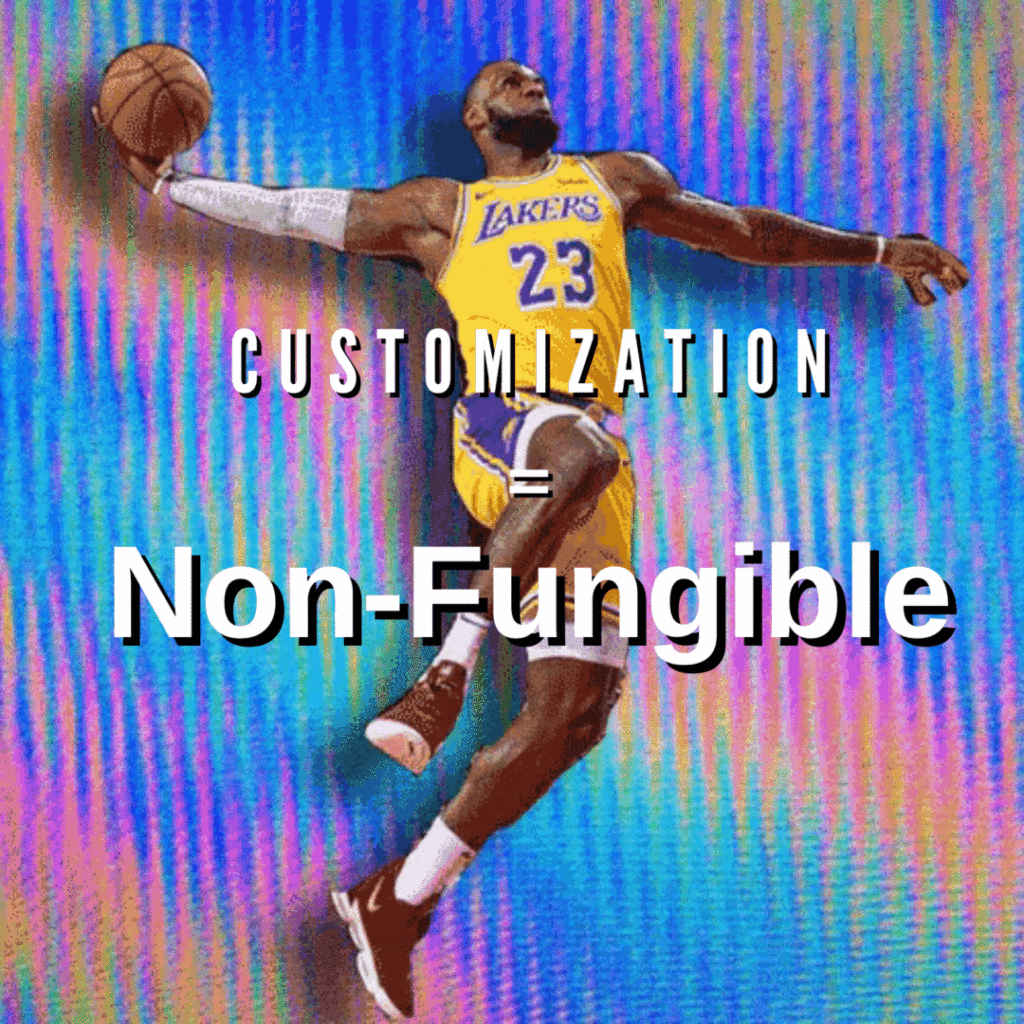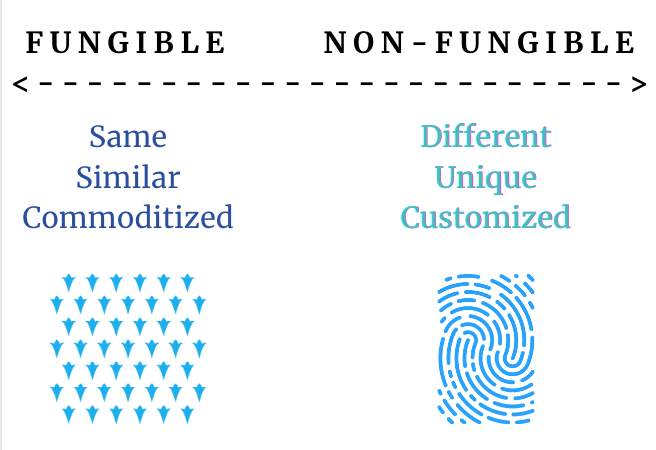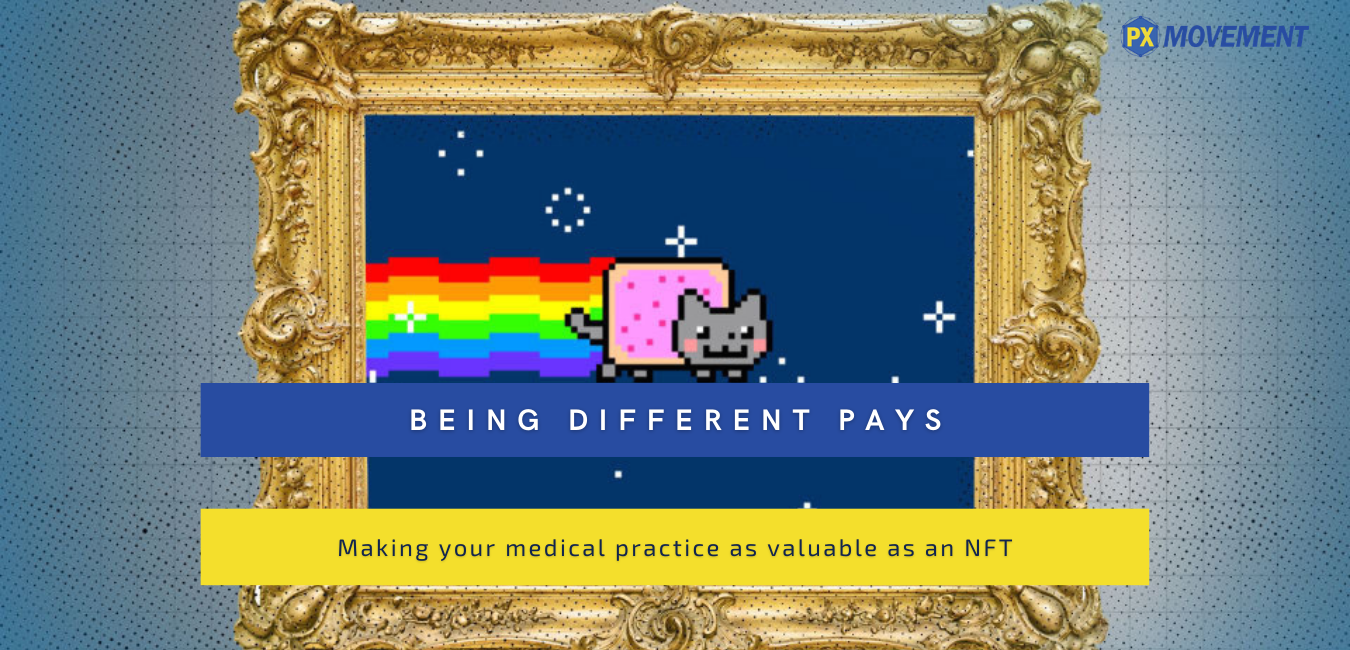Doctors want to be seen as one of a kind, but what goes on in their practice goes against this idea.
Does the following scenario sound familiar? You want to be viewed as unique by your customers and different from everyone else in your field. But your office looks the same as other practices, your check-in process is the same as every other office, and the overall patient experience mirrors what patients can find elsewhere. You may not be taking into account the patient experience as being the key to differentiation.
In this blog post I’m going to talk about the huge monetary value that society puts on being unique and discuss how you can differentiate your practice to become non-fungible!

What's an NFT?
What’s an NFT, you might ask? Well, if you are an artist who works in the digital realm, it’s a means of creating value for your work when you are looking to sell to a buyer. Based on blockchain, the underlying technology behind Bitcoin, it allows the seller to authenticate that their artwork is one-of-a-kind and can’t be copied. From paintings to baseball cards, experts have long been used to distinguish an original from a fake. That authentication process is what gives the object unique value.
A non-fungible token is designed to work the same way and authenticate a picture, video or music file as being a unique original. Without an NFT, the file can simply be copied and distributed. With a non-fungible token, the buyer has assurance that the item is the only one like it. If this sounds hokey, understand that there’s already a booming market in digital art, NBA player video highlights and even the Twitter CEO’s first tweet, which sold for $2.9 million (he donated the proceeds to charity).
What strikes me most about all this is the word fungible, which basically means “exchangeable.” Currency is fungible: a dollar bill can be exchanged for 4 quarters and they share the same value. Non-fungible, as noted above, is the opposite. Not the same; cannot be switched for another. Put on a continuum, it might look like this:

Making Your Medical Practice Non-Fungible Like an NFT
If you run a medical practice that offers services similar to other medical practices, wouldn’t you rather have your practice perceived as non-fungible?
This should make sense, unless you simply don’t care and are okay with people choosing you either randomly or because, all other things perceived as being equal, you offer services at a lower price. When people make purchase decisions based mainly on price, the offering is defined as a commodity.
The antidote to commoditization is customization. If you want your practice to be perceived as different and unique, you want to focus on specific aspects of the patient experience.
While being nice is necessary, it’s no longer sufficient. This was the idea behind the naming of my book “Beyond Bedside Manner.” Here are three insights that you can use to create a more memorable experience:
- Remember their name (and use it!) – Using a sticky note on the chart (to identify what they are wearing) or a CRM, make sure you address patients by their name when they first arrive and are taken back to start their appointment.
- Recall details of their lives – The chart needs to contain some meaningful personal information in addition to clinical findings. Make sure you and your team are capturing details about their family, occupation, recreation or dreams as part of your intake.
- Recommend a specific plan – Patients are seeking a solution to their problem. If you give them “multiple choice” options with equal indifference, you are abdicating your role as an expert.

